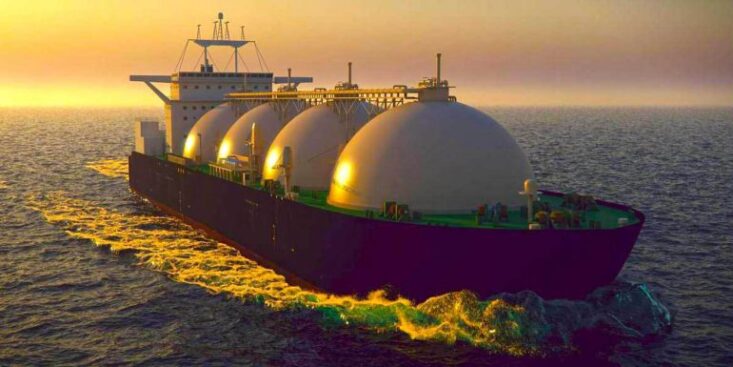The rise of restoration of oil and gas
Executive Summary
As the global petroleum industry matures, an increasing number of projects are fast approaching the end of their productive lives. In Australia, currently, the decommissioning legislative framework has only been applied to smaller operations and is yet to be tested on larger projects. Over the next 50 years in Australia, the estimated decommissioning liability amounts to US$21 billion ($29.6 billion). In anticipation of a substantial number of the 136 fixed oil and gas facilities in operation being decommissioned in the coming decade, the Federal Government is reviewing its policy, regulatory and legislative framework. How will this impact Australia’s oil and gas producers, and will this provide the much-sought-after certainty the market is demanding? Or will it remain an ambiguous number in a company’s long-term liabilities, always provisioned-for but never called upon?
The NOGA saga
The issue of decommissioning, and who is ultimately responsible, came to the forefront of people’s minds in mid-2019, when the owner of the Laminaria-Corallina oil field—North Oil & Gas Australia (NOGA)—went into voluntary administration. NOGA had bought the field from Woodside in 2016 for an undisclosed sum (the ‘Australian Financial Review’ named the price a “peppercorn.”) But along with the asset came a USD$156 million ($219.7 million) abandonment provision.
Late-life asset sales in oil and gas are not uncommon, particularly in the North Sea, where the aim of a smaller operator is to run the asset with very low overheads, squeezing it dry and generating enough cash to cover remediation while still turning a profit. After three years of ownership, the regulator NOPSEMA (National Offshore Petroleum Safety and Environmental Management Authority) determined the floating production storage and offloading vessel (FPSO) had not been maintained to an adequate level, and NOGA didn’t have the funds to bring it up to scratch. The transaction and title transfer was approved by NOPSEMA, which had the right to assess whether the acquirer had the financial capacity to fulfil its obligations. The asset is now in ‘lighthouse mode’; the FPSO vessel is idle but safely standing watch over the offshore fields. with the cost seemingly being borne by the Australian taxpayer.
The current state of play
At the moment, Australian oil and gas companies are expected to provision for future abandonment and restoration. They do so by estimating the end-of-life date and the cost of the work required, then discount these future cash flows to today’s value. The shortcoming is that these estimates are long-dated and little-tested in reality. The operator also factors in an assessment of the impact of future legislation and technologies on the cost of rehabilitation, which may result in lower provisioning. This would increase stock valuations as we explicitly deduct restoration from our sum-of-the-parts valuation.
Current legislation calls for the complete removal of property unless an alternative approach demonstrates equal or better environmental outcomes. In its submission to government on the decommissioning review, Woodside argued that in some cases leaving offshore assets in place may have biodiversity benefits.
We are not experts in this field and cannot make judgment on the veracity of Woodside’s argument, however, if full removal is currently the base-case, the change that Woodside proposed could lead to a reduction in provisioning and a lift in our valuation of the stock—rehab accounts for about 7% of our assessed stock value and about 13% of the current market capitalisation—with Woodside likely realising the most benefit versus its peers, given all of its production comes from offshore. Conversely, given current legislation allows the “leave-in-place” argument to be made, Woodside may already factor this in to its provisioning and should new legislation close off this option, provisioning costs may increase to the detriment of value.
What can be changed to ensure NOGA doesn’t happen again?
Regardless of the ultimate form of abandonment and restoration requirements, what can be done to ensure operators can actually meet their obligations? There are a number of possibilities, each with pros and cons and associated valuation implications. The major oil-producing regions of the UK, US, Canada and Norway all present well-established regimes that have allowed flourishing oil and gas industries and active M&A (merger and acquisition) over many decades. Here we look at a few concepts that are currently being considered in the Australian government review.
Financial assurance
The US, Canada and the UK all have some form of required financial assurance to cover decommissioning. Some regions are more prescriptive, while others are more discretionary in terms of amounts required, which is largely dependent on an assessment of a company’s financial position. Financial assurance can be achieved by directly reserving funds in escrow or, more likely, through surety bonds or insurance with third parties. This option may increase the development and operating costs, but not be completely prohibitive for small developers, who wouldn’t have the funds up front and would plan to pay for decommissioning from retained earnings gained from the operation. Furthermore, this could allow more frequent examination of a private company’s financial position with insurers to ensure premiums are kept low (one would assume, if solvency was questionable, that an insurer would raise premiums to reflect risk). Currently, the government can only interrogate a company’s financial capacity on title transfer, but not on a regular basis.
Restoration & rehabilitation fund
Another option is for all operators to contribute a compulsory levy to a Commonwealth (or state) managed fund, which would be available for decommissioning activities where an operator does not have the means to fund it themselves. In WA, such a levy exists for miners via the Mining Rehabilitation Fund, which requires certain miners to contribute an annual levy proportional to their estimated rehabilitation liability. The system does not appear to be perfect, as larger operators are arguably the least likely to renege on rehab obligations and are essentially enabling the entry for small players by covering their liability risk. Also, and perhaps a positive outcome, this may lead to better standardisation of restoration estimates used by industry, rather than the current “best guess” methodology, to ensure all payers to the fund do so on a consistent basis.
Call-back provisions
In many of the comparable international jurisdictions, the ability for government to seek some form of remedy from the original title holder, even after transfer, is more common than this writer had initially thought. In the NOGA case, this would have put Woodside in the government’s sights. In its submission to the government review, Woodside rightly pointed out the moral hazard such a system presents, with previous titleholders bearing the responsibility of a new operator’s inaction or incompetence. However, we believe with appropriate legislation this could work, but would probably need to be run in parallel with financial assurance or rehab fund levies.
In the US, for example, it seems that a company that transfers an interest in a field would remain liable for all obligations that accrued in connection with the lease up until the title changed hands. This may resolve a reverse instance of the moral hazard highlighted above; that an operator would be better obligated to ensure its asset is up to scratch before selling it, rather than being tempted to under-invest while it is up for sale.
What does this mean for the oil and gas companies and stocks in Australia?
If any of these initiatives were introduced in Australia, the M&A landscape in Australian oil and gas would no doubt change. Prices would need to adjust for liabilities passed on (and potentially, need to be backed by some kind of financial assurance) or potentially would need to be partly retained if call-back provisions were implemented. Would this stifle M&A completely, particularly in mature fields? The experience of the North Sea says no, with majors including BP, Shell, Chevron and ConocoPhillips all engaging in recent late-life asset divestments to mid-cap companies within the once-prolific oil region.
Closer to home, ExxonMobil is once again considering the sale of its share of the Gippsland Basin Joint Venture; ‘The Australian’ reports a deal could be in the order of A$3 billion-$4 billion, with Beach Energy and Santos tipped as possible suitors. However, there is an unknown quantum of abandonment liabilities, which could limit the potential acquirer pool. Beach already has a significant restoration provision relative to its market capitalisation and given the NOGA experience, government may be hesitant to allow title transfer if there are any question marks over the potential of a new owner to meet environmental obligations.
Any changes to legislation would need to be carefully implemented, including any element of retrospectivity. We wouldn’t expect existing operators would need to stump up surety bonds for producing assets, but buyers of existing operations and new projects such as Dorado, Scarborough and other yet-to-be-sanctioned developments may result in increased financial obligations, which would be reflected in the value of the asset, and therefore the value of the stock itself.
Interestingly, while Woodside may be the most impacted by any change in legislation, given it is solely an offshore producer, its restoration provision relative to market cap is the lowest of the four large ASX-listed producers, so it has the capacity to withstand additional obligations. Beach and Santos both inherited significant restoration liabilities from the respective Lattice and Quadrant acquisitions. On a restoration dollar per 2P reserve barrel basis (2P is the sum of proved and probable reserves), Santos Ltd (STO) and Beach Energy Ltd (BPT) stand out at circa US$2.20/boe (barrel of oil equivalent). (Note: for BPT we exclude most of Waitsia undeveloped reserves as full development is yet to be sanctioned). This crude metric shows the present value of environmental obligations relative to the productive life of the assets, which will need to be restored at some point. This doesn’t mean the companies are in any way at risk of not meeting obligations, but does show they may be more levered to changes in legislation such as a levy.
Table 1 – Present value of environmental obligations relative to productive life of assets
| Stock | Restoration provision USDm | 2P reserves (mmboe) | Restoration per boe (USD/boe) |
Market cap USDm | Restoration as a % of market cap |
Enterprise value (EV) |
Restoration as % of EV | Gearing (ND/ND + E) |
| Woodside Petroleum (WPL) | 1,869 | 1,213 | 1.54 | 13,969 | 13.4% | 16,760 | 11.2% | 14% |
| Santos Ltd (STO) | 2,282 | 1,022 | 2.23 | 6,297 | 36.2% | 98,99.5 | 23.1% | 30% |
| Oil Search Limited (OSH) | 694 | 479 | 1.45 | 3,947 | 17.6% | 6,247 | 11.1% | 28% |
| Beach Energy Ltd (BPT) | 597 | 326 | 1.83 | 1,632 | 36.6% | 1,658 | 36.0% | 1% |
| BPT ex-Perth Basin undeveloped |
269 | 2.22 | – | – | – | – | – | |
Source: Company data, IRESS, Nikko AM. Note: OSH figures are post equity raise.
Finding a sustainable outcome for company value and the environment
In summary, the issue of oil and gas restoration lies uniquely across all three aspects of environmental, social and governance (ESG) investing. Not only does it directly relate to ensuring a safe environment, good abandonment practices allow continuation of a producer’s social licence to operate. While large-scale restoration activities are yet to occur in Australia, we must rely on good governance and disclosure practices when making our assessment of a company’s ability to meet its obligations.
It is the duty of today’s investor to use our position to engage with board and management teams and advocate for increased disclosure on abandonment and rehabilitation of operating assets to ensure we have the information we need to accurately value a company’s exposure to these future liabilities and better determine the true sustainable value of an equity, while at the same time ensuring the best possible outcome for the environment.
Important Information & Disclaimer
This material was prepared and is issued by Nikko AM Limited ABN 99 003 376 252 AFSL No: 237563 (Nikko AM Australia). Nikko AM Australia is part of the Nikko AM Group. The information contained in this material is of a general nature only and does not constitute personal advice, nor does it constitute an offer of any financial product. It does not take into account the objectives, financial situation or needs of any individual. For this reason, you should, before acting on this material, consider the appropriateness of the material, having regard to your objectives, financial situation and needs. The information in this material has been prepared from what is considered to be reliable information, but the accuracy and integrity of the information is not guaranteed. Figures, charts, opinions and other data, including statistics, in this material are current as at the date of publication, unless stated otherwise. The graphs and figures contained in this material include either past or backdated data, and make no promise of future investment returns. Past performance is not an indicator of future performance. Any economic or market forecasts are not guaranteed. Any references to particular securities or sectors are for illustrative purposes only and are as at the date of publication of this material. This is not a recommendation in relation to any named securities or sectors and no warranty or guarantee is provided.










